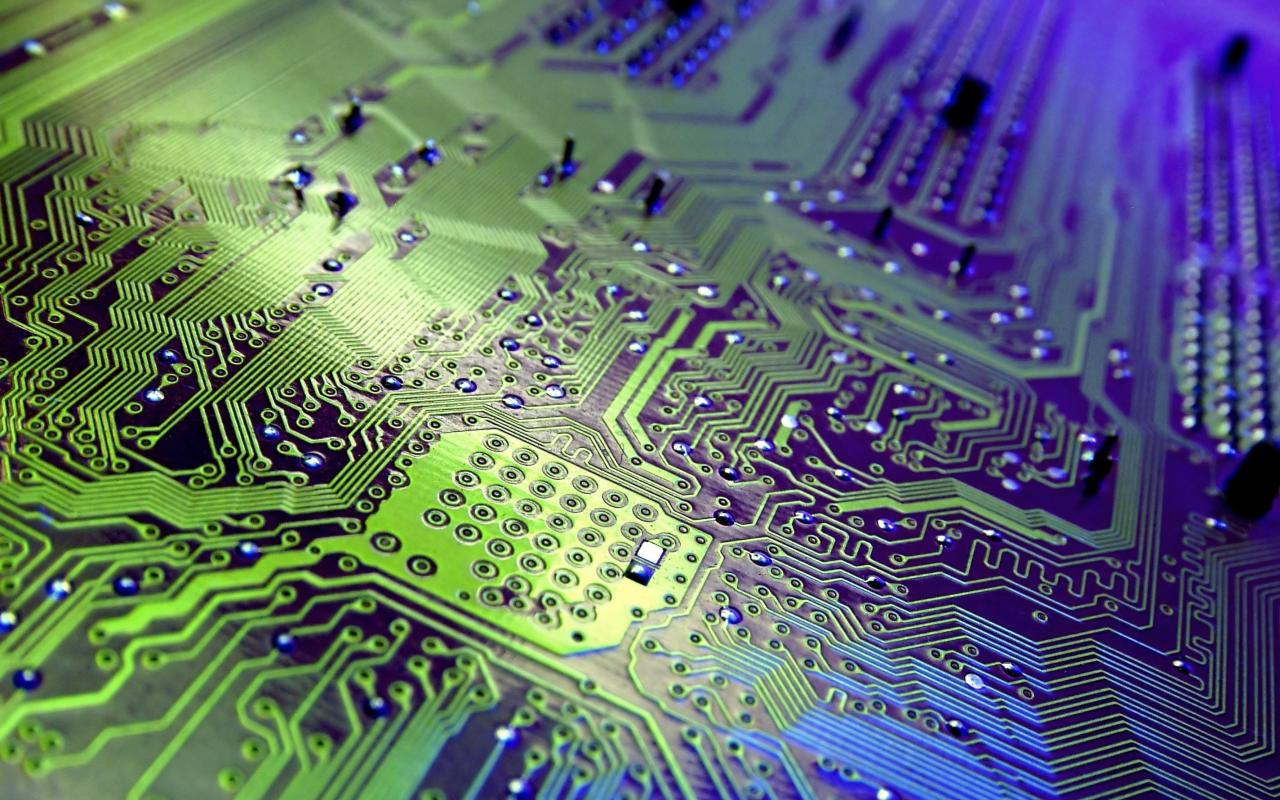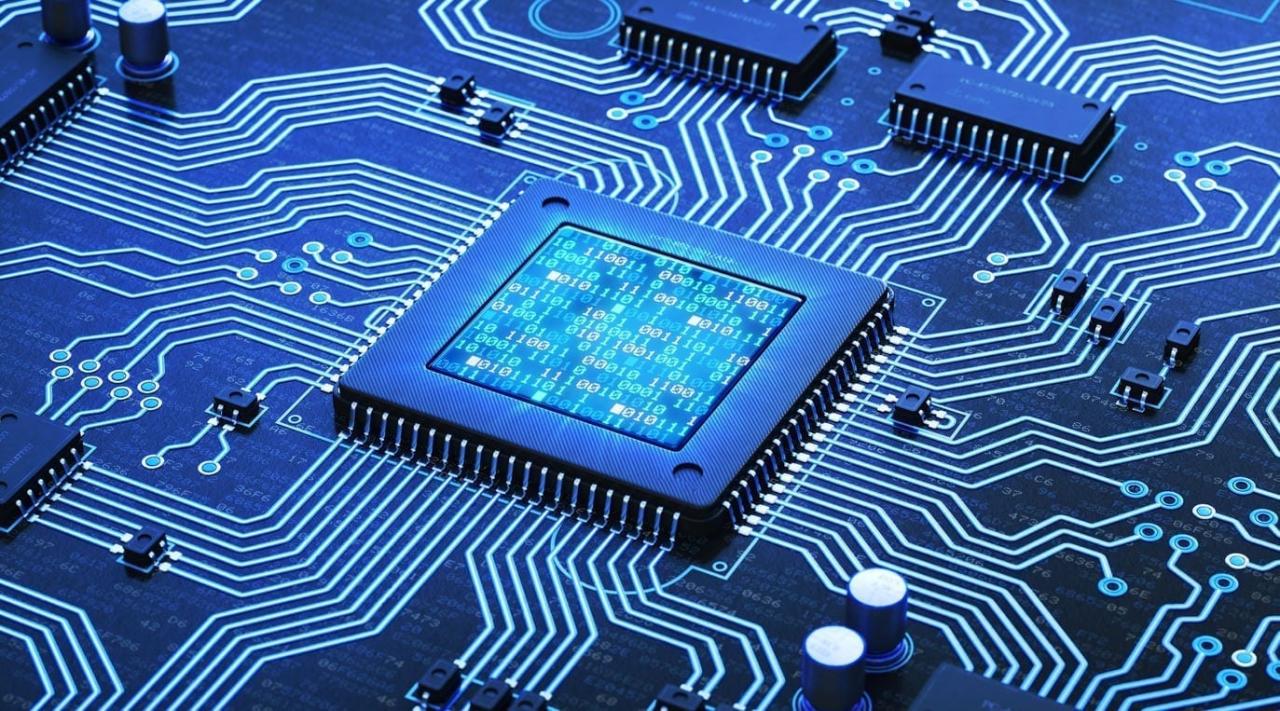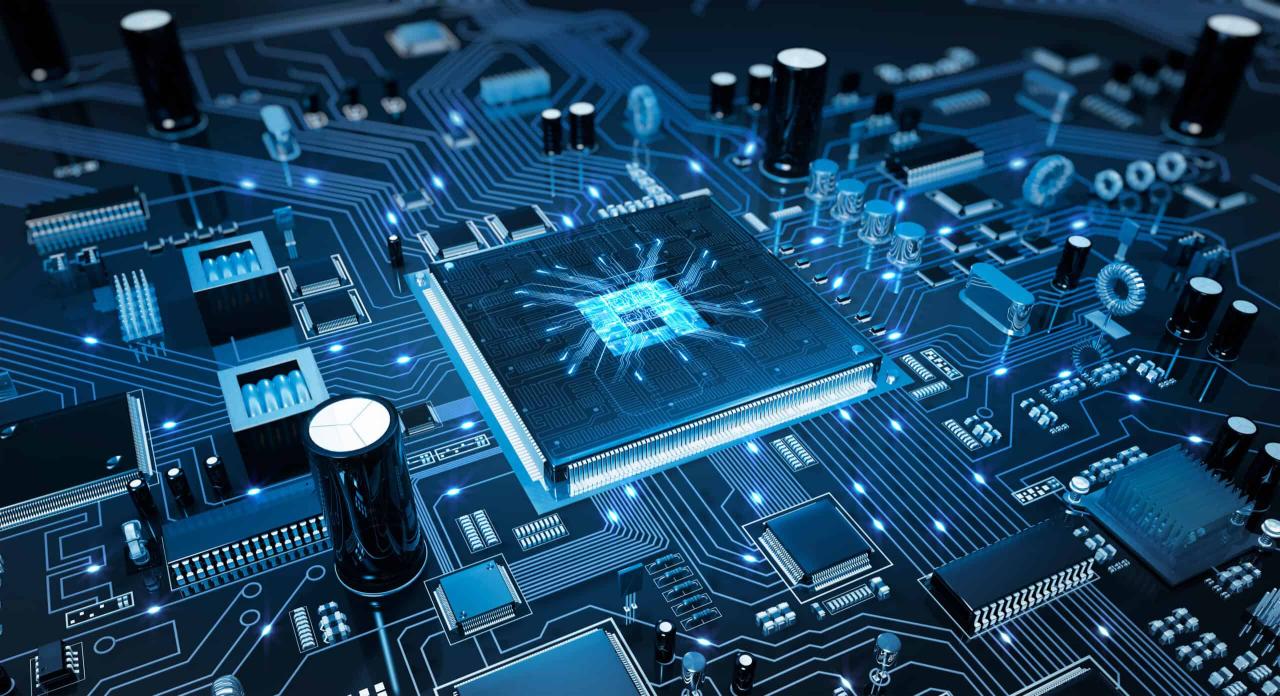Chip iPhone has become a pivotal element in redefining what smartphones can achieve, particularly with Apple’s continuous innovation in chip technology. Since the introduction of the first iPhone, each generation has brought remarkable advancements that significantly enhance device performance, power efficiency, and user experience. As we delve into the evolution of iPhone chips, it’s clear that these tiny components are not just the heart of the device but also the key to unlocking incredible features that set Apple apart in the saturated smartphone market.
The latest iPhone chip boasts impressive specifications that elevate everything from camera quality to augmented reality capabilities, ensuring that users receive a seamless and powerful experience. With an ever-evolving landscape of mobile technology, understanding the role of chip technology in shaping the future of iPhones is essential for any tech enthusiast.
Chip Technology in iPhones

The evolution of chip technology in iPhones has been a remarkable journey, showcasing Apple’s commitment to innovation and performance. From the inception of the first iPhone, which featured a simple ARM processor, to the latest models equipped with advanced A-series chips, each iteration has brought significant enhancements in speed, efficiency, and capabilities. This continuous advancement has not only improved user experience but has also set new standards in the smartphone industry.
Evolution of Chip Technology in iPhones
The first iPhone, launched in 2007, utilized the ARM 11 chip, which was a significant step forward for mobile devices at the time. However, as smartphones became more sophisticated, Apple recognized the need for more powerful processing capabilities. This led to the introduction of the A-series chips, specifically designed to optimize the performance of iPhones. Each subsequent chip has introduced improvements in processing power and energy efficiency.
– A4 Chip (2010): The A4 chip debuted with the iPhone 4 and marked the first time Apple designed its own chip. It featured a single-core processor and provided enhanced graphics capabilities compared to its predecessors.
– A6 Chip (2012): Introduced with the iPhone 5, the A6 chip featured a dual-core architecture, significantly boosting performance and efficiency.
– A8 Chip (2014): This chip brought 64-bit architecture to the iPhone 6 and 6 Plus, delivering a notable increase in speed and capability for running complex applications.
– A12 Bionic Chip (2018): The A12 chip integrated Apple’s Neural Engine, enhancing machine learning capabilities and allowing for real-time image processing.
– A14 Bionic Chip (2020): Featured in the iPhone 12 series, the A14 chip provided further advancements in speed, efficiency, and machine learning, making it a powerful tool for both users and developers.
– A15 Bionic Chip (2021): The latest in this evolution, the A15 Bionic chip, introduced even more advanced graphics performance and improved battery efficiency, ensuring that users experience seamless multitasking and gaming.
Specifications and Capabilities of the Latest iPhone Chip, Chip iphone
The A15 Bionic chip, featured in the iPhone 13 series, is known for its cutting-edge technology and impressive specifications. This chip incorporates a 6-core CPU, a 4-core GPU, and a 16-core Neural Engine, enabling a wide array of capabilities.
– Performance: The A15 Bionic chip offers up to 50% faster CPU performance than its competitors, making it one of the most powerful chips in the smartphone market.
– Graphics: The enhanced GPU allows for smooth graphics rendering and high frame rates in demanding applications and games.
– Machine Learning: With its advanced Neural Engine, the A15 can perform up to 15.8 trillion operations per second, which is critical for features such as real-time image processing, facial recognition, and augmented reality applications.
– Power Efficiency: The new chip technology ensures that the iPhone 13 maintains excellent battery life, providing up to 2.5 hours more usage compared to the previous generation.
Impact of Chip Technology on Overall Performance of iPhones
The advancements in chip technology have had a profound impact on the overall performance of iPhones. These chips are not merely processors; they are the backbone of user experience, enabling a variety of functionalities that define modern smartphones.
– Speed and Responsiveness: The powerful A-series chips ensure that every action on the iPhone, from launching apps to multitasking, is executed with remarkable speed and efficiency.
– Enhanced Graphics Experience: Users enjoy stunning visuals in games and applications, thanks to the chips’ graphics capabilities. The increased GPU performance leads to smoother animations and higher-quality graphics.
– Improved Battery Life: The efficiency of the chips contributes to longer battery life, allowing users to engage with their devices for extended periods without frequent charging.
– Innovative Features: The integration of the Neural Engine has enabled Apple to introduce innovative features such as computational photography, advanced face tracking, and real-time video effects, thus enhancing the overall functionality of the device.
In summary, the evolution of chip technology in iPhones has not only increased performance but has also paved the way for new features that enhance user experience, demonstrating Apple’s leadership in smartphone technology.
Comparing iPhone Chips with Competitors: Chip Iphone

The evolution of smartphone technology has been significantly shaped by the performance of mobile chips. Apple’s A-series chips, found in iPhones, represent a benchmark in processing power and efficiency, attracting considerable comparison with competing Android devices. Understanding the differences in chip technology between these two ecosystems can illuminate how they impact user experience and overall performance.
Apple’s iPhone chips, particularly the latest A15 and A16 Bionic processors, are renowned for their innovative architecture and optimized performance. These chips utilize a unique 5-nanometer manufacturing process, allowing for sophisticated chip design that enhances both speed and energy efficiency. In contrast, Android devices typically employ chips from manufacturers like Qualcomm and Samsung, with the Snapdragon 8 series and Exynos chips being among the most prevalent.
Performance Metrics of iPhone Chips vs. Android Competitors
Comparing performance metrics between iPhone chips and their Android counterparts reveals distinct advantages and disadvantages. The following performance aspects are crucial in influencing user experience:
- Processing Speed: Apple’s chips consistently outpace most Android processors in benchmark tests. For instance, the A15 Bionic scored remarkably higher in single-core performance compared to Snapdragon 888.
- Graphics Performance: The integrated GPU in Apple’s A-series chips, such as the 4-core GPU in the A14 Bionic, provides superior graphics performance for gaming and graphical applications, outperforming many Android GPUs.
- Energy Efficiency: Apple’s chips are designed to balance performance with low power consumption, leading to longer battery life in iPhones. This is a significant advantage over many high-performance Android devices that may drain battery quickly under heavy usage.
- AI and Machine Learning: The neural engine in Apple’s chips enhances machine learning capabilities, allowing for features such as improved photography and faster app performance. This capability is often more refined than those found in Android chipsets.
The differences in chip performance substantially affect the user experience across various smartphone brands. For example, while Android devices may offer a wider range of hardware customization options, iPhones benefit from a tightly integrated software and hardware ecosystem that enhances performance reliability. The result is a smoother experience for iPhone users, particularly in multitasking and demanding applications.
“The synergy between Apple’s hardware and software is a defining factor that elevates the overall performance of iPhones compared to many Android devices.”
Conversely, Android manufacturers are increasingly closing the performance gap with innovations in chip technology. The introduction of the Snapdragon 8 Gen 1 chip, for instance, has seen significant improvements in processing speed and energy efficiency, offering a robust alternative to Apple’s offerings. However, it’s crucial to note that while Android devices boast diverse options, the fragmentation in software updates and optimization can lead to inconsistent performance across the brand.
In summary, while Apple’s iPhone chips lead in several performance aspects, the competition from Android manufacturers is intensifying, presenting users with a broader array of choices. As technology continues to advance, the dynamics between these competing chip technologies will remain vital in shaping the future landscape of smartphones.
The Role of Chips in iPhone Features
The advancement of chip technology has been integral to the evolution of iPhone features, enhancing performance and capabilities significantly. Apple’s custom silicon allows for innovations that not only improve speed and efficiency but also enable transformative features across the device.
One of the most prominent ways in which chips influence iPhone features is through improvements in camera quality and battery life. The A-series chips are designed with specialized image processing capabilities, allowing for enhanced photographic features like Night Mode, Smart HDR, and computational photography. These features rely on the chip’s ability to process data from multiple camera sensors quickly, resulting in stunning images even in challenging lighting conditions. Additionally, the efficiency of these chips plays a crucial role in battery optimization. By performing tasks more efficiently, the chips extend battery life, ensuring users can enjoy their devices longer without needing frequent recharges.
Impact on Augmented Reality Capabilities
The relationship between chip technology and augmented reality (AR) capabilities in iPhones is a significant focus of Apple’s innovation strategy. The introduction of the A12 Bionic chip marked a turning point for AR, featuring a dedicated Neural Engine that facilitates real-time processing of complex AR tasks. This allows iPhones to deliver immersive experiences that blend the digital and real worlds seamlessly.
The following table illustrates the feature enhancements made possible by advancements in iPhone chip design:
| Chip Model | Feature Enhancement | Description |
|---|---|---|
| A12 Bionic | Enhanced AR Experiences | Integration of a dedicated Neural Engine allows for real-time object recognition and environmental mapping. |
| A13 Bionic | Improved Photography | Support for advanced computational photography features, including enhanced Night Mode and Smart HDR. |
| A14 Bionic | Battery Efficiency | Increased performance with lower power consumption, extending battery life during intensive tasks. |
| A15 Bionic | Advanced Machine Learning | Improved machine learning capabilities enhance user interactions through voice recognition and image processing. |
| A16 Bionic | ProMotion Technology | Faster refresh rates for smoother scrolling and improved responsiveness in AR applications. |
The continuous refinement of chip technology directly correlates with the ability of iPhones to provide advanced features that enhance user experience, showcase the capabilities of AR, and maintain efficient power management. This ongoing evolution not only sets Apple products apart from competitors but also pushes the boundaries of what’s possible in mobile technology.
Future Trends in iPhone Chip Development

As the technology landscape continues to evolve rapidly, the iPhone’s chip development is poised to follow suit. Future iPhone models are expected to showcase chips that not only enhance performance but also integrate cutting-edge features that leverage advancements in various technological domains. The emphasis on efficiency, artificial intelligence, and improved connectivity will shape the next generation of Apple’s processors.
Anticipated advancements in chip technology for future iPhone models include enhanced processing power and energy efficiency. Apple’s transition to its own silicon has already set a precedent for optimizing hardware and software integration. This strategic move will likely lead to even more specialized chips, including those designed for specific functions like enhanced graphic processing, machine learning, and connectivity.
Advancements in Chip Architecture
Future iPhone chips are expected to adopt innovative architectures that allow for greater parallel processing capabilities. This will enable them to handle complex tasks more effectively and improve overall device responsiveness. Key trends anticipated include:
- 3nm and Beyond Fabrication Technology: With advancements in semiconductor manufacturing, chips based on 3nm technology will become commonplace, resulting in smaller, more powerful transistors that boost performance while reducing energy consumption.
- Increased Integration of AI Capabilities: Future chips will likely feature specialized neural processing units (NPUs) that enhance machine learning tasks, facilitating real-time processing of AI applications and improving features such as image recognition and voice assistants.
- Enhanced Graphics Processing Units (GPUs): New designs will focus on providing superior graphics performance, enabling more immersive gaming experiences and sophisticated augmented reality applications.
The integration of AI in chip development is particularly noteworthy. Emerging AI technologies can significantly influence performance optimization by enabling the chip to learn user behavior, resulting in improved battery life and performance tailored to individual usage patterns.
Potential Features Enabled by Future Chips
The evolution of chip technology will allow for a wide range of new features that enhance user experience. These potential features might include:
- Seamless 5G Connectivity: Future chips will be designed to fully leverage 5G networks, providing faster data speeds and improved connectivity for streaming services, gaming, and more.
- Augmented Reality Capabilities: With advanced processing power, future iPhone models could incorporate immersive AR experiences that blend digital and physical worlds seamlessly.
- Enhanced Security Features: Chips may include advanced biometric sensors or encryption methods to improve device security and user privacy.
The ongoing advancements in chip technology and the integration of AI capabilities will fundamentally transform how iPhones operate and interact with users. With each iteration, Apple is likely to push the boundaries of what is possible, setting new standards in the smartphone industry.
Questions and Answers
What is the latest chip used in iPhones?
The latest chip used in iPhones, as of October 2023, is the A17 Pro, which enhances performance and efficiency.
How do iPhone chips compare to Android chips?
iPhone chips generally outperform many Android chips in benchmark tests, particularly in single-core performance and power efficiency.
What features are enhanced by iPhone chips?
iPhone chips enhance features like camera quality, battery life, and augmented reality capabilities, making for a richer user experience.
Will future iPhone chips support artificial intelligence?
Yes, future iPhone chips are expected to integrate AI capabilities to improve performance and enhance user features further.
How often does Apple release new iPhone chips?
Apple typically releases new iPhone chips annually alongside new iPhone models, introducing significant advancements each time.
The Samsung S9 Plus is a remarkable smartphone, known for its impressive camera capabilities and sleek design. With features that enhance user experience and performance, it stands out in the crowded market of high-end devices. Whether you’re a photography enthusiast or just looking for a reliable phone, the S9 Plus certainly delivers on all fronts.
If you’re looking for a classic yet powerful device, the Galaxy Note 2 remains a noteworthy option. Despite being an older model, its productivity features and stylus integration make it a unique choice for those who appreciate the combination of style and functionality. It’s a great reminder of Samsung’s innovation in the smartphone arena.